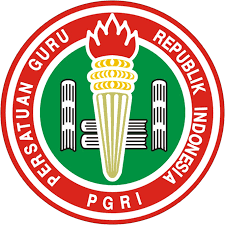IDENTIFICATION OF POTENTIAL STUDY OF CULTURAL HERITAGE ON CHINESE COIN FINDINGS IN BANYUWANGI DISTRICT
IDENTIFIKASI KAJIAN POTENSI CAGAR BUDAYA PADA TEMUAN KOIN CHINA DI KABUPATEN BANYUWANGI
DOI:
https://doi.org/10.36526/santhet.v7i2.2934Keywords:
Identification, Cultural Heritage, Chinese Coins, BanyuwangiAbstract
Many Chinese coins are found in Banyuwangi district with various variations. The purpose of this study was to identify the findings of Chinese coins in Setembel hamlet, Gambiran village, Banyuwangi district. The formulation of the problem is how to identify findings of Chinese coins?, and what is the history of dynasties in Chinese coins in Banyuwangi. The method used is a qualitative method using the Magnifying Plus Application, the Pleco Android Application and Chinese Handwriting Recognizing. Research results Identification Results Of the 76 samples of Chinese coins that can be identified and classified based on the ruling dynasty and kings in China, 52 pieces were identified, 24 pieces were illegible due to wear and tear. Based on the above classification, the most commonly found in Banyuwangi are Chinese products from the Song dynasty, 80% and 20% from the Ming dynasty.
References
Astiti, Ayu. 2012. Strategi Pengentasan Kemiskinan Dengan Pemberdayaan Masyarakat Dalam Pengelolaan Sumber Daya Budaya Di Kawasan Danau Batur, Kabupaten Bangli, Provinsi Bali. Laporan Penelitian kerjasama RISTEK. Jakarta: Kemenbudpar.
Creswell, J. W. 2008. Research Design: Qualitative, Quantitative, and Mixed Methods Approaches. California: Sage Publications, Inc.
Creswell, J. W. 2012. Qualitative Inquiry & Research Design: Choosing Among Five Approches. California: Sage Publications, Inc.
Denzin, N. K., & Lincoln, Y. S. 2005. The Sage Handbook of Qualitative Research. Third Edition. London: Sage Publications.
Koentjaraningrat. 1974. Kebudayaan Mentalitet dan Pembangunan. Jakarta: PT Gramedia. Koentjaraningrat. 2000. Pengantar Ilmu Antropologi. Jakarta: PT. Rineka Cipta.
Margana, S. 2012. Ujung Timur Pulau Jawa, 1763-1813: Perebutan Hegemoni Blambangan. Yogyakarta: Pusaka Ifada.
Maleong, Lexy J. 1998. Metodelogi Penelitian Kualitatif. Bandung: PT. Remaja Rosdakarya.
Mudra et al. 2007. Studi Uang Kepeng sebagai Produk Seni Kerajinan dan Hubungannya dengan Konsep Ajeg Bali di Bali. Denpasar: ISI.
Narada, Satria. 2004. Ajeg Bali. Denpasar: Balipost.
Santoso, Gempur. 2005. Metodologi Penelitian Kuantitatif dan Kualitatif. Jakarta: Prestasi Pustaka.
Winarni, R. Cina Pesisir: Jaringan Bisnis Orang-orang Cina di Pesisir utara Jawa Timur sekitar Abad XVIII. Denpasar: Pustaka Larasan.
Septianingrum, A. (2019). Asia Timur. Yogyakarta: Unicorn Publishing.
Shen Yun Performing Arts. (2011). Dinasti Song. Retrieved June 18, 2022, from shenyunperformingarts.org website:





























